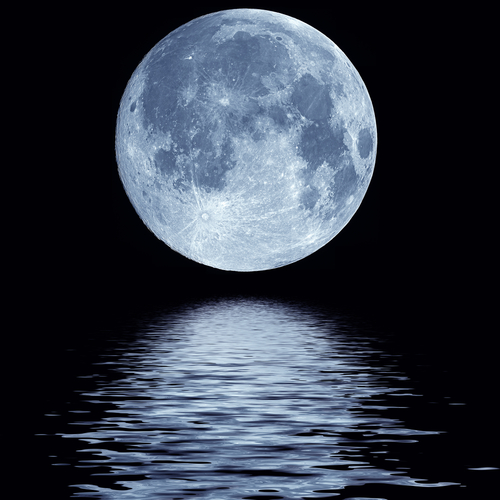Astrologically speaking, there has been a lot going on this March. There are not one, but two full moons, meaning we’re going to see a Blue Moon. Mercury retrograde began on Mar. 22, and Jupiter retrograde has also been going on since early Mar. 2018. And now you can add one more thing to the list: a blue moon on Mar. 31 that’s also called the Pink Moon. Yes, it’s a blue moon, but also the Pink Moon. I know, it’s very confusing, and no, (unfortunately) it won’t look like a pastel masterpiece. So when can you see the March full Pink Moon? And what does that string of color-themed names up there even mean? I’ve got you covered!
OK, so here’s the deal: this March, like I already said, there are two full moons. There was one in the very beginning of the month on Mar. 1, and there will be one on the last day of the month, Mar. 31. This phenomenon is referred to as a Blue Moon. One would assume that it’s called a Blue Moon because it is blue. One would be wrong. It’s not! There are a few different theories as to why it’s called that, although no one knows which one is exactly correct. For example: the moon once appeared blue in 1883 after volcano Krakatoa erupted and the dust in the air made the color appear differently. NASA says that may have brought about the term. But no one really knows!
The Pink Moon, however, has a slightly more concrete story behind it. It’s named after wildflowers that grow in the United States and Canada during the spring. The moon itself has a deeper meaning behind it as well: it is one of the things that determines when Easter will fall during a certain year, as it always falls on the first Sunday after the Pink Moon. (Sure enough, the Pink Moon is on Mar. 31, and Easter is on Apr. 1.) Oh, and don’t expect this moon to look like it’s name — it isn’t pink. Or blue. Or any color other than general moon color.
The names for this moon come from Native American tribes and were used by early Colonial Americans, so they have a long history. They came up with these names in order to record the months — this was way before the Julian or Gregorian calendar.
This year, the Pink Moon will rise on Mar. 31, and that day is your best chance at seeing it. In New York, the full moon will first be visible around 8:40 a.m., local time. You’ll be able to get a great view of the full moon if the sky is clear, but if it isn’t, you’re not going to have as much luck. If you’re really interested, you can also use a telescope or binoculars to see it a little better. It might be worth going outside for. The Pink Moon is also the last Blue Moon until Oct. 31, 2020.
The Pink Moon will, of course, affect your astrological sign. AstroYogi.com reported, “The moon is a feminine energy where the planets in astrology are concerned, and on a Pink moon day its energies are at their peak, hence the name ‘Pink Moon.’ As the moon impacts one’s emotions, it impacts our love life too!” We’ve got a more comprehensive guide right here if you want to see what the Pink Moon means for your sign specifically.
If you want to check out this moon, you can wake up early to see it rise, or you can get an even better view of it at night, when the sky will be a whole lot darker. It’s a pretty special moon, so it just might be worth going out of your way for!

